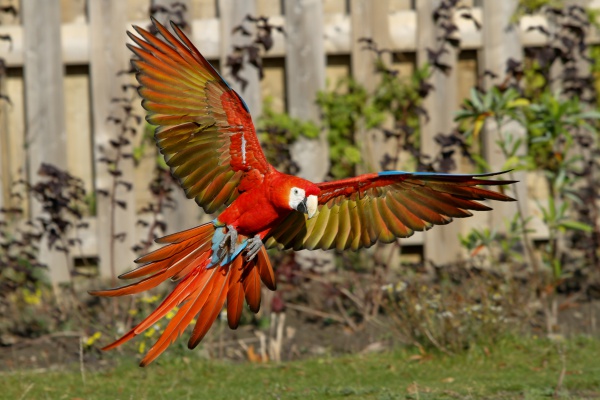Facts About Scarlet macaw
The scarlet macaw is a strikingly colorful parrot native to Central and South America. With its vibrant red, yellow, and blue feathers, this bird is a true spectacle. It belongs to the macaw family and thrives in humid evergreen forests across tropical regions. You can spot them in countries such as Mexico, Ecuador, Colombia, Bolivia, Venezuela, and Brazil. Unfortunately, habitat destruction and the pet trade have put these beautiful birds at risk, causing local extinctions in some areas.
First described by Carl Linnaeus in 1758, the scarlet macaw belongs to the genus Ara. There are two subspecies, distinguished by slight differences in size and feather coloration. These birds are quite large, averaging about 81 centimeters in length and weighing around 1 kilogram. Their striking appearance includes scarlet plumage, blue tail feathers, and yellow wing coverts.
Known for their loud calls, scarlet macaws can live up to 75-90 years in captivity. In the wild, they often fly solo or in pairs, soaring above the forest canopy. They communicate through honks and are excellent mimics of human speech. When it comes to diet, they enjoy insects, larvae, snails, foliage, flowers, and nectar. They form monogamous pairs, with females laying two to three eggs in tree cavities.
The scarlet macaw's range extends across South America and parts of Central America, inhabiting rainforests, woodlands, river edges, and savannas. Despite challenges like habitat fragmentation, the IUCN classifies the scarlet macaw as "least concern" due to its large population in South America. However, it is listed on CITES Appendix I and considered endangered by the USFWS because of the pet trade.
Scarlet macaws have been bred in captivity for decades, with the techniques used in the pet trade benefiting wild populations. Captive breeding programs have boosted macaw numbers in areas where they are scarce. Hybridization in captivity has also produced unique scarlet macaw hybrids, valued for their appearance and commercial appeal. These captive-bred birds are sometimes released into the wild to aid conservation efforts.

 Nicaragua
Nicaragua